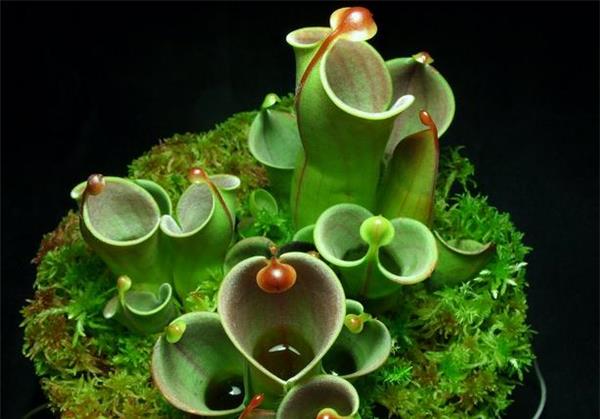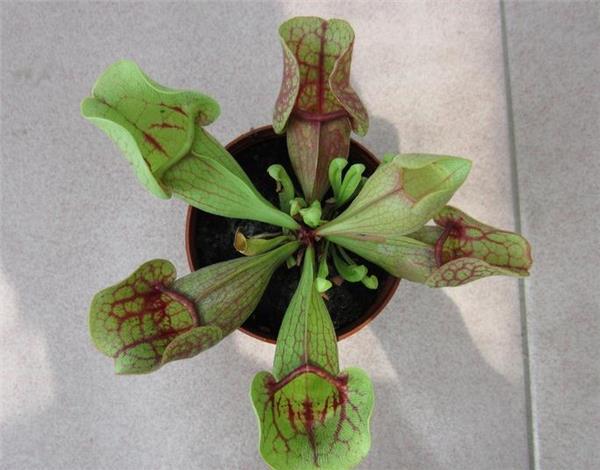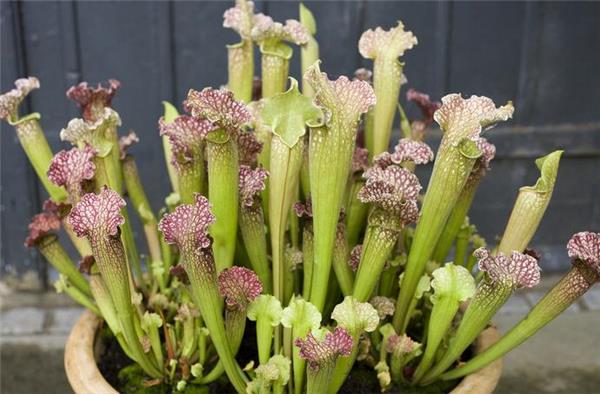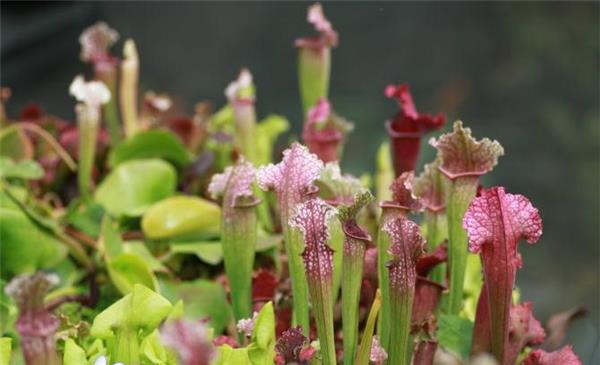How to raise the little sun bottle grass?
What is bottle grass? How should the little sun bottle grass be raised? Perhaps some friends do not have a special understanding of this. Today, I will give you a brief introduction. Let's learn about it together.

Morphological characteristics of Rabdosia angustifolia
Perennial insectivorous herbs. Stemless, rosette leaves, leaves evergreen, rough, cylindrical, with inverted hairs in the leaves, so that insects can enter but not easily out. Scape erect, flowers solitary, pendulous, ranging from yellow to pink, depending on variety, blooming from April to May.
Bottle grass belongs to the genus Cryptomeraceae, which is native to Western Europe, North America, Mexico and other places. Because their tubular leaves can secrete digestive juices, mixing with their stored Rain Water can cause insects trapped in the tube to fester. In other words, they use leaves to capture and digest insects such as ants and wasps.
Growth habits: like warmth, require high humidity, suitable for growth in ventilated, direct sunlight in the open zone. Garden landscape use: it can be decorated in the garden, which is more suitable for the cultivation of biological popular science materials in the school. Breeding: to reproduce by sowing or ramet.

How to raise the little sun bottle grass
Soil: bottle grass prefers barren acidic soil. The matrix is made of peat soil, water moss, perlite and other materials, or it can be planted with peat soil alone. The bottom of the basin should be padded with broken bricks or pieces. Planting should not be too deep, so that half of the rhizome should be exposed to the soil. After planting, cover the basin with a small amount of moss to moisturize the basin, and then place the bowl in shallow water 3-4 meters deep.
Temperature: bottle grass likes to be warm in winter and cool in summer, and the suitable temperature for growth is 20-26 ℃, which is more hardy. In winter, the bottle grass is in the dormant period, the overwintering temperature should not be lower than-5 ℃, but it is best to maintain the temperature above 8C. Bottle grass is not resistant to drying and high temperature, so shading, spraying water and strengthening ventilation should be taken to reduce the temperature.
Lighting: bottle grass likes a semi-overcast environment, and strong sunlight will burn the leaf tube. Shade in summer, cover 50% of the sun, 60%, or put bottle grass in a place where there is enough scattered light to avoid direct sunlight. The rest of the time, you need plenty of light, which can make the bottle-shaped leaves more bright green and lovely. When the light is insufficient, the bottle grass will grow and the leaves will become dark.

Watering: bottle grass likes wet soil environment and is not resistant to drought. Bottle grass should be well watered during the growing period to keep the substrate moist. Watering should be controlled in winter and the soil can be slightly moist. The water temperature should be prevented from getting too high in summer, otherwise it will cause rotten roots. Rain Water should be used for watering. Avoid watering water containing calcareous matter.
Humidity: bottle grass is suitable to grow in a humid environment and is not resistant to drying, so bottle grass should often spray water to the plant and its surroundings during the growing period to keep the environment moist. It is necessary to spray water on the leaves of bottle grass in summer, which can not only reduce the environmental temperature, but also dry the environment is not conducive to plant growth.
Fertilization: in spring, bottle grass can be treated with nitrogen-based fertilizer every semimonthly, and the root can be irrigated with 0.2% copyright 0.3% fertilizer, or the diluted fertilizer can be directly poured into the pest bag for absorption. On the other hand, the bottle grass with red leaves and red veins should pay attention to the cooperation of nitrogen, phosphorus and potassium, so as to make the leaves bright and improve the ornamental value.

This is the end of the introduction of the culture method of the little sun bottle grass. I believe that after reading it, we have a certain understanding of the culture method of the little sun bottle grass. I hope the relevant content introduced today will be helpful to you to a certain extent.
Related
- Wuhan Hospital Iron Tree Blooming Result Was Instantly Frightened by the Gardener Master
- Which variety of camellia is the most fragrant and best? Which one do you like best?
- What is the small blue coat, the breeding methods and matters needing attention of the succulent plant
- Dormancy time and maintenance management of succulent plants during dormancy
- Minas succulent how to raise, Minas succulent plant pictures
- What are the varieties of winter succulent plants
- How to raise succulent plants in twelve rolls? let's take a look at some experience of breeding twelve rolls.
- Attention should be paid to water control for succulent plants during dormant period (winter and summer)
- Watering experience of twelve rolls of succulent plants
- Techniques for fertilizing succulent plants. An article will let you know how to fertilize succulent plants.



